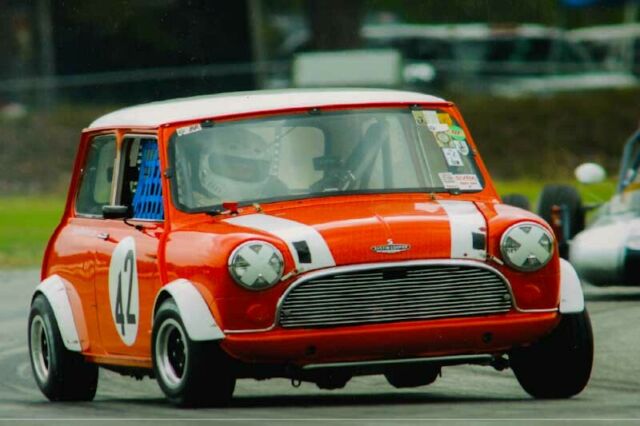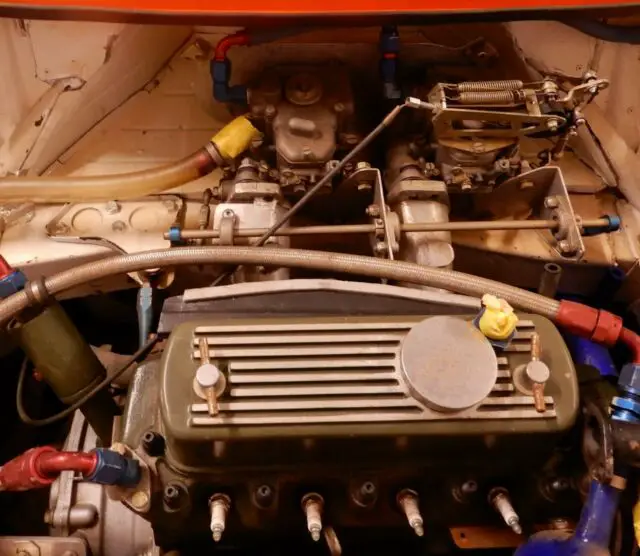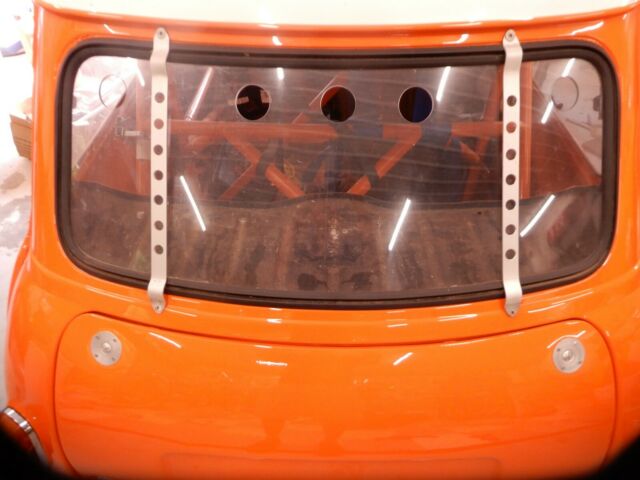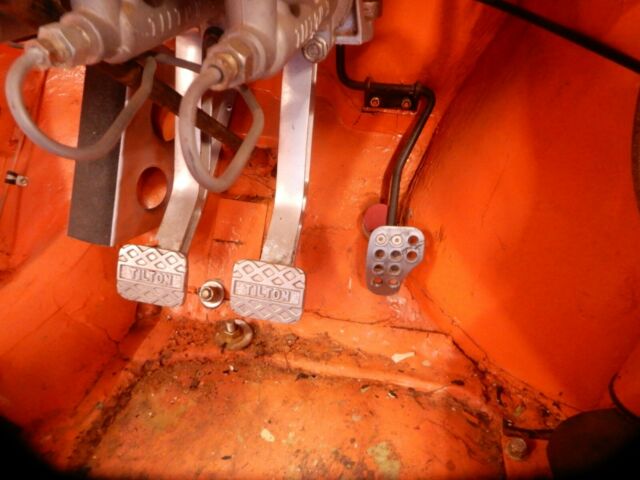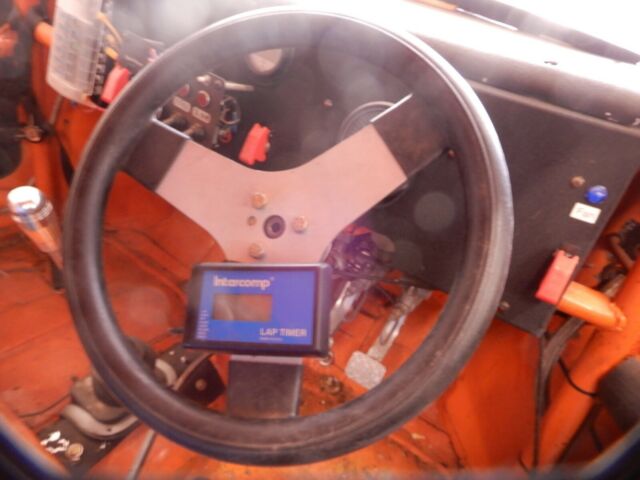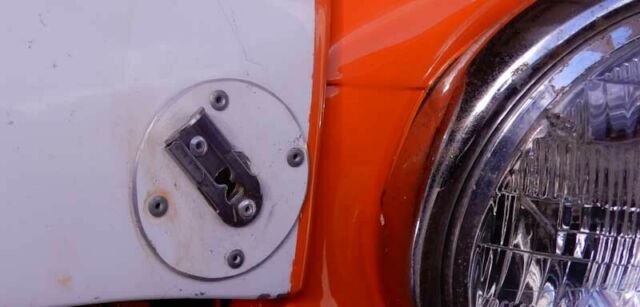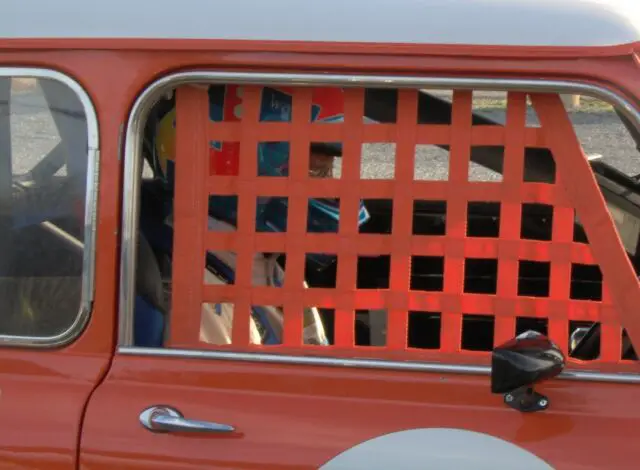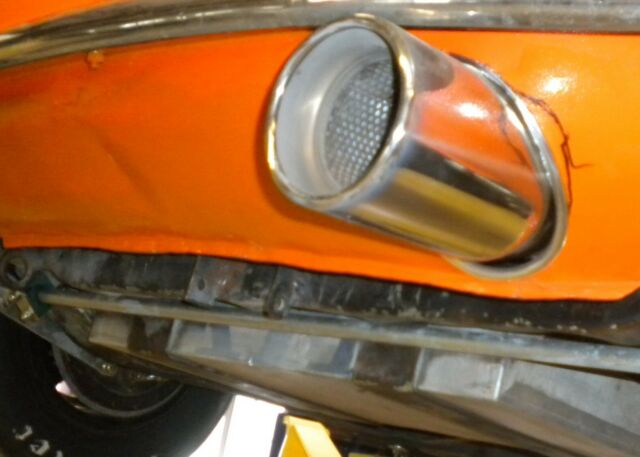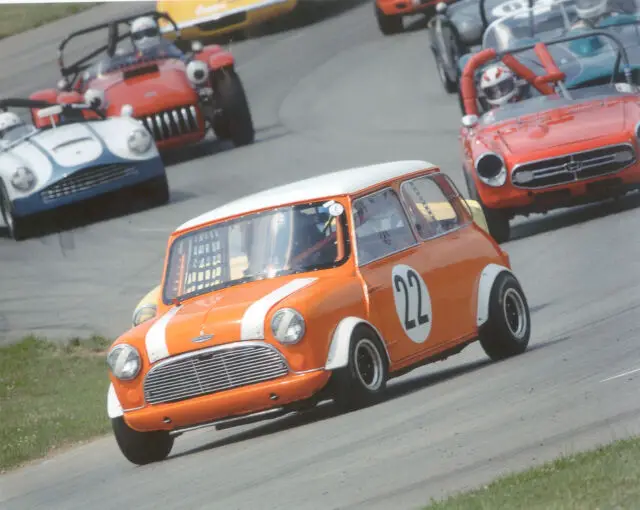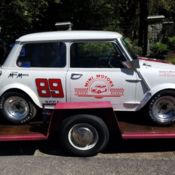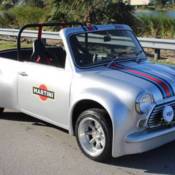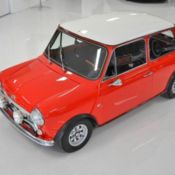|
I can't think of any item more difficult to buy on line than a vintage race car. I'll make every effort to describe this as accurately as possible and would welcome a personal inspection. I can send pictures of specific items you my want to see and stand ready to answer any specific questions you may have and would be happy to arrange a personal inspection.This car was the winner in its last race in a healthy field including V-8 specials and Porsche's and was given the corner workers award as the most exciting car.From that time it has benefited from an obsessive updating cosmetically and mechanically that has included the following upgrades. These improvements, I'm sad to say, approach the sale price of the car now.1. The car was recently painted completely including the main body structure in a Mclarenesk orange with white Cooper stripes, roof and wheel flares.2. New custom built AXO shocks with gas charged alloy bodies.3. A completely new and state of the art front brake system with ventilated front rotors and new performance calipers. As a note these may not be considered legal by some organisations, but over size rotors and calipers that are legal with every organisation are included.4. A new KAD rear sway bar I consider superior to the two other bars that have been used.5. New competition suspension rubber "spring" units .6. New front sway bar. Considered unnecessary by some, but not by me. It also offers a degree predictability that I feel the car lacked without a front bar.*Freshly rebuilt Fortech engine by Doug Bane.*The car has four corner weight quick adjustment screws by KAD.*KAD quick shift unit.*KAD alloy trailing arms.*Adjustable suspension to include front and rear toe adjustment. Front and rear camber adjustment.*A unique cooling system that includes a custom aluminum main radiator in the proper side mounted location, as mandated by some vintage racing groups, but with an additional auxiliary aluminum radiator from a Kawasaki motorcycle.*The Fortech/Seven engine with the unique scatter pattern cam is fed through a very special split Weber syste, that is duel Weber DCOE carburetors. If your not aware of that system, it was developed in England where the BMC engine has been so exhaustively developed and this must be the ultimate iteration .The A engine is limited by its two intake ports and the only way to get a perfectly straight path in to these ports is by using two two barrel Weber carburetors. This engine then uses only one barrel from each. In application its simple and effective and probably the real key to maximum BMC performance. A picture is attached.*Aluminum oil cooler.* Accusump oiling system-Imperative in my opinion.* Close ratio straight cut gear box gears with straight cutdrop gears.* Aluminum water pump pulley.*Heavy duty tie rods.* Heim jointed suspension.* Heim jointed engine steadies by KAD* Tilton pedal cluster with with adjustable brake bias.* The roll cage was designed and built by the original owner, an engineer, for use in this car as a GT4 SCCA race car.That original cage was of chrome moly tubing and was uniquely tied to the front suspension shock towers. I added to that structure additional chrome moly tubing, of thinner wall section where appropriate. That includes additional door bars, diagonal roof bar and rear suspension bracing.* The rear brake drums are finned aluminum.*Starter is a light weight gear driven starter, possibly Toyota.* In car lap timer system is included and has never been used.*Removable steering wheel.Aeroquip lines where appropriate.Lexon windscreen, rear window and side windows.Fiberglass hood and trunk.Carbon-Fiber Sparco competition seat. Current price is north of $1,000.All body panels and even doors are quickly removable.ATL fuel cell is mounted below the original location and specially made for me in an aluminum case.The car has the original remote shift system but it seems a rod change mechanism is supposed to be superior, A rod change mechanism is included but would have to be installed by a competent Mini tech..Specially made magnesium Revolution wheels.There is one structural item you should be aware of. The well built aforementioned roll cage was originally built for a driver who, I would suspect, was about 5'9" tall. In order to make the car comfortable for someone taller, the rear horizontal cage bar would have to be changed. That shouldn't be a major operation, but it would involve some fabrication but only of one horizontal bar but there could be other ways to accommodate taller drivers.*The original log books from the SCCA are included.The engine mentioned above has not been started since it was rebuilt, but before this would be delivered it will be checked and run by the engine builder.I would help with shipping arrangements but the cost would be that of the buyer. I would guarantee the specifications of the material in this car, but like any race car, its operation would be the responsibility of the buyer.I have not sold anything on eBay for about a year, but had sold a couple $3,000+ of racecar parts a year ago with an A+ rating.Please contact me if you have further questions or would like pictures of specific items. I can't put in my phone number in the postin, but a personal conversation would help with further descriptions.races.As a footnote: Decades ago my father raced a Cooper Formula Jr with a BMC engine that had been driven 1 year earlier by an American driver who went on to significant success in F-! and Can-Am. It was reputed to have had the latest and most powerful BMC A engine that could be built at the time. There is no way to compare the performance of power units from different generations without dyno specification from eac, but I'm sure this engine in a vintage sedan would have at least a 25% advantage and only part of that would be due to the engine that is 100cc larger than the former Formula Jr or SCCA Formula C requirments.
|
 Home
Home Contact us
Contact us NEWEST CARS
NEWEST CARS SELL YOUR CAR
SELL YOUR CAR FAQ
FAQ